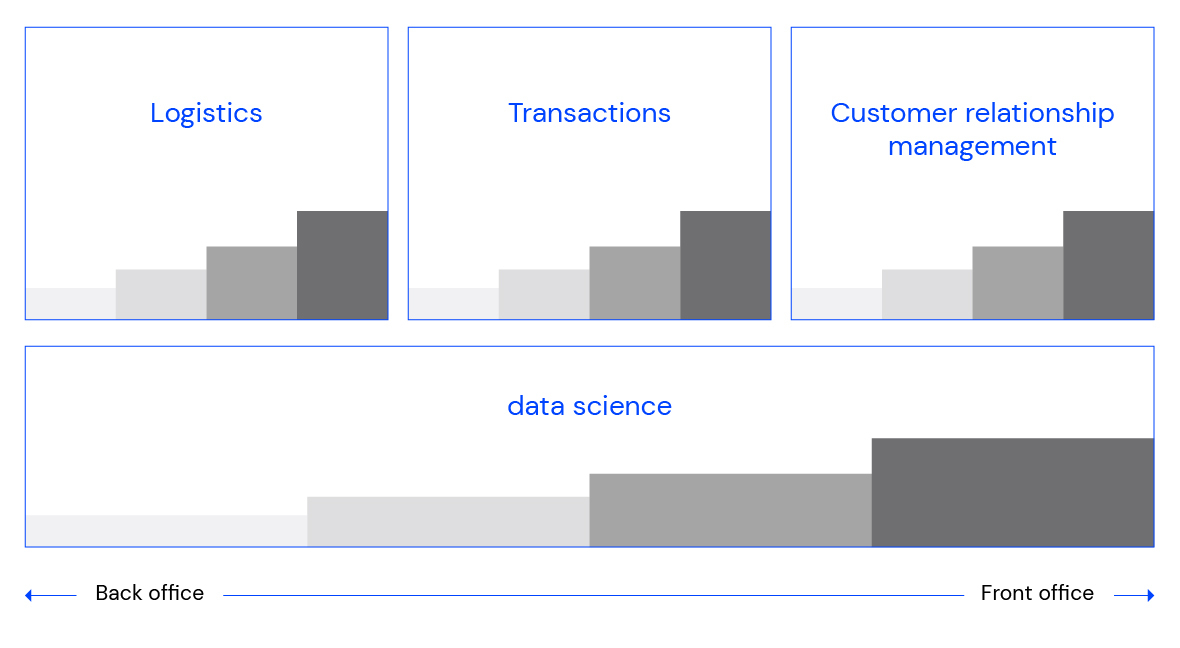
Let’s talk about digital maturity
Any managerial team looking to grow the business or create a competitive advantage has heard of digital transformation. This term has been used repeatedly by experts in the business community, by academia and consulting firms, and by provincial and federal government departments.
However, the productivity lag in Québec continues to increase year after year. Québec’s digital transformation is not keeping pace with OECD countries, which has a direct impact on our productivity and economy as a whole. It’s significant enough that the experts at HEC Montréal’s Centre for Productivity and Prosperity describe this phenomenon as “the quiet decline of the Québec economy.”
Even a marginal decline in productivity directly impacts our quality of life. While we could point a finger at government for this decline, that would be too easy. Subsidies are flowing in from all sides and in all forms—several billions (yes, billions!) are available to help companies begin their digital transformation journey.
So why isn’t our economy keeping pace?
If this is so important, and if managers are aware of digital transformation, then why is the province falling behind?
We’ve found that the term “digital transformation” doesn’t resonate well with managers. It’s a vague, imprecise and overused term that many managers equate with signing a blank cheque for a massive project that has a start date—but no end date.
Since the concept is difficult to incorporate into strategic planning, the return on investment is hard to calculate and internal responsibilities are hard to delineate. It also affects many different spheres of an organization, which can seem inherently risky.
However, multiple studies show that we need to digitally transform our organizations to face the complex challenges of today and tomorrow—including the talent shortage, which requires reversing the trend of Québec’s “quiet decline.”
Let’s talk more about digital maturity
To demonstrate that transformation is possible within organizations of all sizes, we should stop talking about digital transformation. Instead, we should talk about digital maturity.
From the outset, this notion of maturity indicates three important premises:
- An organization starts at an initial stage of maturity.
- From there, the organization takes steps to reach the next stage of maturity.
- An organization can be mature in one sphere and immature in another.
In other words, to talk about maturity, it is imperative to have a starting point, an end point and a unit of measurement.
The four spheres of digital maturity
There are four different spheres of digital maturity within an organization:

For example, in a service-oriented company where customer relationship management is more critical to growth than logistics, you could tackle digital maturity in CRM and assume digital immaturity in logistics. For a manufacturer that processes raw materials, the opposite could be true: the digital maturity of logistics is far more important than CRM.
The key is that a company doesn’t embark on digital transformation that targets several spheres at the same time with an incomplete diagnosis and vague schedule.
Regardless of the specific use case, an audit can quickly determine your starting point. Then, with strategic planning, it’s possible to determine how to move from the first to second step in a specific sphere that quickly creates a competitive advantage.
Using a digital maturity model, a managerial team takes the ambiguity out of digital transformation and doesn’t sign a blank cheque. Instead, they have a concrete roadmap with a much more precise schedule and budget approximation.
In an upcoming series, we’ll introduce the four digital maturity models. Subscribe to our newsletter to learn more and stay tuned on our LinkedIn and Facebook accounts.





















